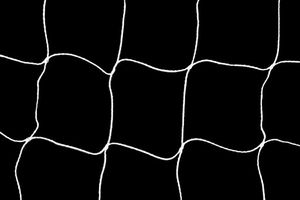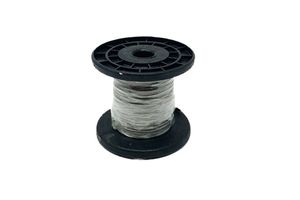Help, I've Got Seagulls Nesting On My Roof!
As a specialist provider of bird deterrent netting and systems, we often hear from customers who have a problem with seagulls nesting on their roofs.
Not only can the noise be annoying, it poses a health risk, too, with bird droppings and feathers covering window ledges and the ground below.
So what can you do about it?
Firstly, Know Where You Stand With The Law
It is against the law to harm any species of gulls or damage their nests or eggs on purpose or through recklessness in England, Scotland and Northern Ireland under the Wildlife and Countryside Act 1981 and the Wildlife (Northern Ireland) Order 1985.
This essentially means that there is nothing that you can do to force the birds to leave. You cannot harm them or their next in any way; you have no legal standing. In fact, if you do harm them, then you could face legal action. So bear that in mind.
However, all is not hopeless. You are allowed to deter them and encourage them to leave your property of their own accord. Obviously, this means using non-lethal, non-violent, and non-invasive measures.
Identify Which Type Of Gull You're Dealing With
First things first, before you can start to come up with a plan, you first need to know what you are working with. Knowing what form of gull has decided to nest on your roof is important because the most effective methods to scare them off are likely to vary a little depending on which type of gull you are dealing with.
Herring Gulls
Herring gulls are essentially what most people will imagine when thinking of a seagull. They can get to be quite large, and they are incredibly noisy, with a lot of people thinking that their call could be mistaken for raucous laughter. They are predominantly white, with a light grey back, little yellow feet and a red-spotted yellow bill.
Black-backed Gulls
There are actually two types of black-backed gulls. The lesser black-backed gull which is of a somewhat similar size to a herring gull. The adults have bright yellow legs, blacker wings and grey upper parts.
Great black-backed gulls, on the other hand, are actually the world's largest type of gull, and this is key in distinguishing them. Other than their size, they also have a large square head, small, beady eyes and a heavy bill. Their legs are a pinkish colour, and they have black upper parts.
Seagull Deterrent Products & Solutions
Once you have worked out what type of seagull you are dealing with, you can then start to think about what you want to use to deter them. There are a few products and methods for you to explore.
Seagull Bird Spikes
Seagull bird spikes are a common deterrent. There are a few different forms, but essentially they are spikes which stop the birds from landing or getting a foothold on your roof. They can be affixed either permanently or temporarily, depending on your preference.
-
They are humane
-
They prevent roosting
-
They work on all birds – not just seagulls.
Bird Wire
Bird wire is, as the name suggests, a wire system installed to prevent birds from perching. As they go to land on the wire feet first, they notice that it is unstable, and they fly off, looking for somewhere more stable to land.
-
Less noticeable
-
Humane
-
Pretty easy to install
Bird Gels
Bird gel has been created and refined over the years. The small pots of gel are affixed to a building, and they give off an ultraviolet light; this, combined with the scent and taste, acts as a deterrent to the local birds without being toxic or harmful to them.
-
Non-toxic
-
Long-lasting
-
Almost invisible from the ground
Bird Netting
Bird netting comes in various forms depending on the type of bird that you have a problem with; for example, seagull netting is bigger than sparrow or pigeon netting. It is also designed to stop the birds from being able to get a perch, therefore, acting as a deterrent.
-
Easy to install
-
Not that noticeable
-
Fair subtle in appearance
4 Tips For Preventing Seagulls Nesting On Roof Areas & Buildings
In addition to installing various bird deterrents, there are a few other things that you can do to encourage the seagulls – or most birds, for that matter – to find a new roost.
Tip One: Limit Food Sources
Firstly, you want to try to limit their food source. This means keeping litter to a minimum, making sure that outdoor bins are always closed and secured, regularly cleaning the gutters, and covering any fruits or vegetables that you are growing.
Tip Two: Install A Chimney Cage
If you find that the gulls have made a home in your chimney, then, obviously, you cannot move their nest, but once they have left, you can install a cage or a hood and a grate to prevent them from nesting here the following year.
Tip Three: String Up Bird Tape or Old CDs
Seagulls, like other birds, are also startled away by light reflections. You could either use bird tape or old CDs or DVDs around your property. When the sun hits them, they reflect the light, and these can deter birds from landing on or around your property.
Tip Four: Hire A Professional!
Finally, if you have tried a few different things and you are truly at your wit's end, then it might be worth looking into enlisting the help of a professional. They know all of the tricks of the trade where nesting birds and other pests are concerned, so they are much more likely to help you to come up with an effective plan of action.
Summary: Keep Your Roof Gull-Free With Huck Nets!
Realistically, the best thing that you can do to prevent seagulls and other birds from nesting on your roof or other areas of your property is to stop them from landing and roosting in the first place. Whilst this might seem easier said than done, you do have options.
There are spikes, gels and wires, all of which can be used to prevent birds from finding a perch on your property; however, they do vary in terms of the difficulty of installation and, of course, how noticeable they are too. That being said, nets are a pretty sleek option, and they are often a little more affordable but still fairly easy to install.


